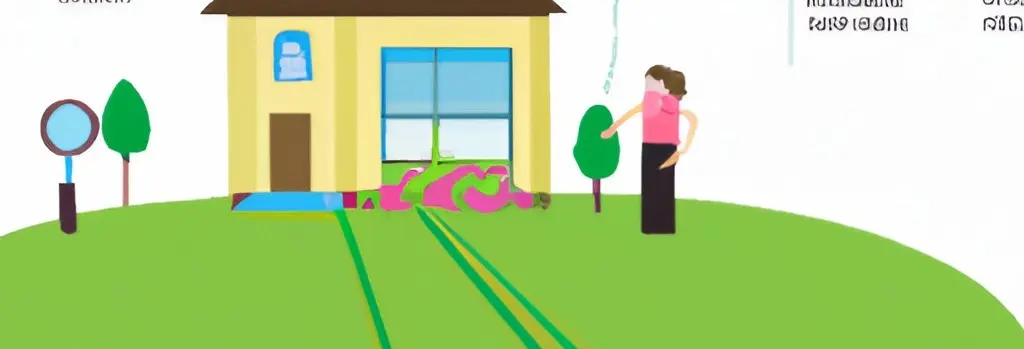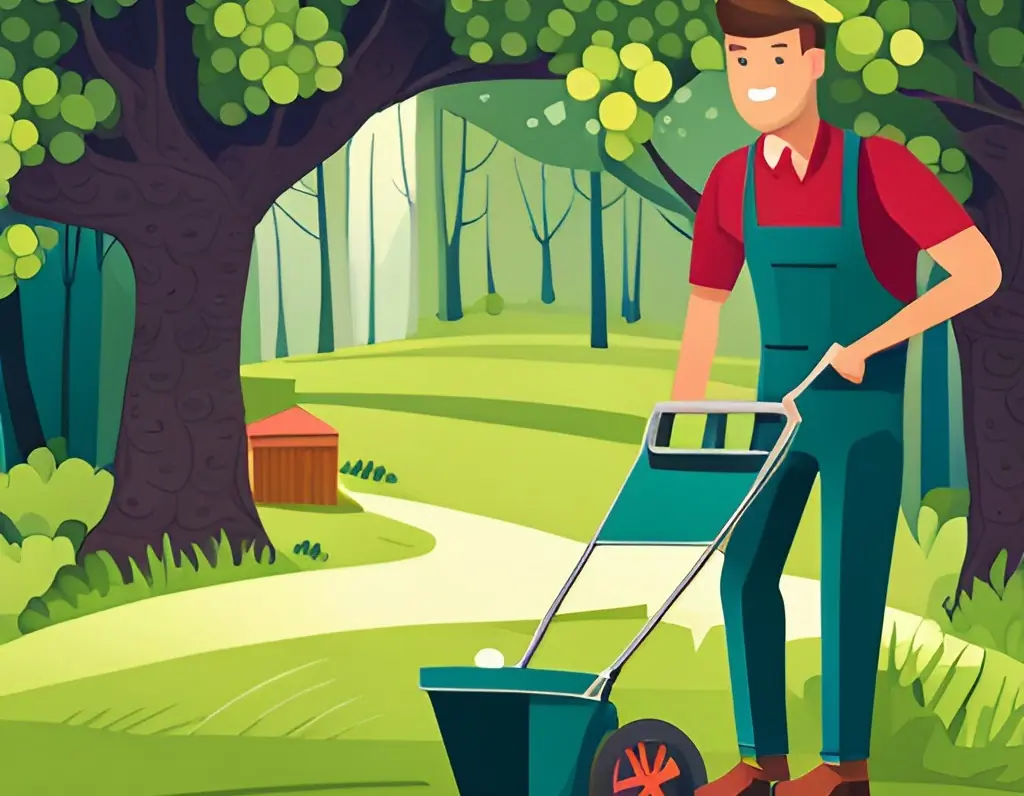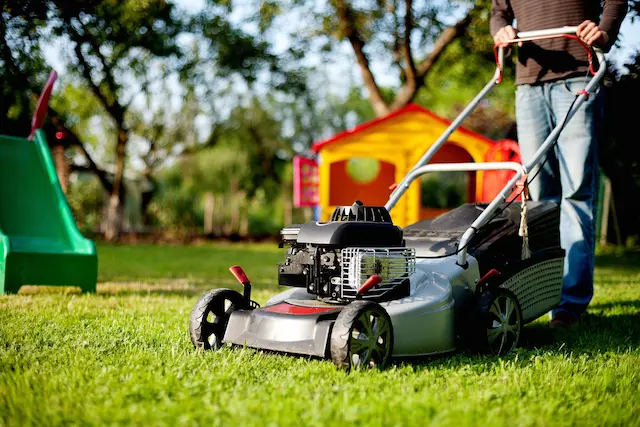Step-by-Step Guide to Maintaining a Healthy Lawn: A Journey from Novice to Pro
Your lawn, that emerald sea extending from your front porch, is more than just a plot of earth. It’s an extension of your home, a play area for your children, a sanctuary for your morning coffee, and a testament to your care.
But, let’s face it, maintaining its vibrancy can feel like a never-ending battle. The cost of professional help can make us wince, and the time it requires can seep into our precious weekends.
But what if I told you it is possible to maintain a healthy, lush lawn all by yourself, on a budget, and without consuming all your free time?
- Part 1: Understanding Your Lawn
- Part 2: Gear Up – Essential Tools for Lawn Care
- Part 3: Your Guide to Basic Lawn Care
- Part 4: Advanced Lawn Maintenance
- Part 5: Tips for Maintaining a Lush and Green Lawn
- Part 6: Troubleshooting Common Lawn Problems
- Part 7: Resources for Further Assistance
- Part 8: Getting Started with DIY Lawn Care: A Newbie’s Guide
This article is here to arm you with proven strategies, practical tips, and a step-by-step guide to nurture your lawn to its best health, right from the comfort of your gardening gloves. Let’s dive in and turn your yard into the envy of the neighborhood.
Part 1: Understanding Your Lawn
The first step in any gardener’s journey is getting to know their ‘green’ partner in crime: their lawn.
Understanding Your Landscape: More than Just a Green Blanket
A healthy, vibrant lawn is never an accident, but the fruit of understanding and working with the unique conditions of your landscape. Here’s a quick rundown to help you get started:
- Regional Climate: Every region has a distinct climate that greatly influences your lawn’s health. For instance, while a home in Oregon thrives with cool-season grasses such as Kentucky bluegrass, my friend’s yard in sunny California boasts of heat-loving Bermuda grass.
- Type of Grass: Selecting a grass type suitable for your regional climate is a game-changer. This can not only help reduce your watering costs but also ensure your lawn stays lush even in the face of extreme weather conditions.
- Soil Conditions: Last but definitely not least, understanding your soil conditions can aid in selecting the right products and strategies for lawn care.
Practical tip: Understanding your region’s climate and choosing a suitable grass type can help you save on watering costs and keep your lawn looking fabulous even in extreme temperatures.
A Close Examination: Assessing Your Lawn
After understanding your surrounding landscape, it’s crucial to conduct a thorough assessment of your lawn’s health. This is a lesson I learned the hard way when my once-green lawn had areas turning a dull yellow.
It’s akin to a regular health check-up, where early detection can help prevent larger problems down the line. The problem? My soil was too alkaline. My solution? A soil test kit from my favorite garden store.
By adding some organic matter like compost or manure, I was able to adjust the soil’s pH and return those yellow patches back to their vibrant green state.
Here’s a practical tip for you: Regular check-ups of your lawn will be key in maintaining its health. Now that you’re equipped with knowledge about your landscape and tips on lawn assessment, you’re one step closer to achieving that lush, green lawn.

Understanding Your Lawn: The Basics
Your lawn is a dynamic ecosystem that interacts with the environment, animals, insects, and microorganisms around it. Just as our bodies need specific nutrients to function, your lawn requires a delicate balance of elements to thrive. This balance includes adequate light, suitable temperature, water, air, and a range of nutrients.
- Light exposure directly affects the photosynthesis process, where your grass converts sunlight into energy. Different grass types require varying degrees of sunlight, so understanding your lawn’s sun exposure is crucial.
- Temperature is another key factor. Grasses are typically divided into cool-season and warm-season types, each having different temperature preferences.
- Water is essential to all life forms, and your lawn is no exception. However, the right watering technique and frequency can make all the difference.
- Air is necessary for the roots to breathe and for the beneficial microorganisms in the soil to break down organic matter into nutrients.
- Lastly, the nutrients your lawn needs are primarily nitrogen, phosphorus, and potassium, but secondary elements like calcium, sulfur, and magnesium, and minor elements like iron and zinc also play essential roles.
Understanding these basics will provide you with the foundation needed to foster a healthy, robust lawn. In Part 2, we’ll look at the necessary tools for lawn care.
Part 2: Gear Up – Essential Tools for Lawn Care
Obviously, tools are an essential part of any DIY project. Here’s a list of must-haves for keeping your lawn in tip-top shape:
The Basic Tools: Your Lawn Care Starter Pack
I can assure you that having the right tools can make your lawn care journey much easier and more enjoyable. Here are the essentials:
- Lawn Mower: The backbone of any lawn care arsenal, a reliable lawn mower ensures even grass cutting, promoting healthier growth. Choose one based on the size of your lawn and the type of grass you have.
- Rake: A sturdy rake is invaluable for removing leaves and other debris from your lawn. It also helps to aerate the soil, allowing your grass to breathe.
- Garden Hose or Sprinkler System: Regular watering is key to a lush lawn. Depending on the size of your plot, a simple garden hose might suffice, or you may need to invest in a more advanced sprinkler system.
- Trimmer/Edger: While an edger helps maintain clean lines around your lawn and flower beds, a trimmer is instrumental in cutting grass and weeds in areas where a mower can’t reach, such as around trees, along fences, and border areas. Some tools combine the functionality of both an edger and trimmer, providing more bang for your buck.
- Leaf Blower: A leaf blower is an excellent addition to your tool kit, especially during fall. It makes the job of cleaning up those pesky leaves a breeze, and some models also function as vacuums, allowing you to easily collect and dispose of leaves. Don’t underestimate the importance of keeping your lawn clear of leaves; a thick layer of leaves can prevent sunlight from reaching your grass, leading to unhealthy patches.
- Soil Testing Kit: I can’t stress enough the importance of understanding your soil’s composition. A soil testing kit is a simple, affordable tool that can provide invaluable information about your soil’s pH and nutrient levels. With this information, you can make informed decisions about what amendments your soil may need for your lawn to thrive. Remember, a healthy lawn starts with healthy soil.
- Wheelbarrow or Garden Cart: Garden work often involves moving heavy materials. A sturdy Wheelbarrow or Garden Cart can be your best friend in these situations, saving you countless trips back and forth across your lawn. Whether you’re hauling soil, compost, or garden waste, these tools can make the task much easier and less strenuous.
- Safety Gear: Lawn care isn’t just about the right tools and techniques; it’s also about safety. Essential safety gear includes sturdy gloves to protect your hands, safety glasses to shield your eyes from flying debris, and sturdy, closed-toe shoes for foot protection. Working in the garden can be a great joy, but remember to take precautions to avoid unnecessary injuries.
Practical Tip: Always clean your tools after use to keep them in good condition and extend their lifespan. Rust and dirt can hinder their performance and even damage your lawn.
Advanced Tools: Taking Your Lawn Care to the Next Level
As you become more familiar with your lawn’s needs and progress, you might want to consider some specialized tools to elevate your lawn care game:
- Fertilizer Spreader: Achieve an even distribution of fertilizers across your lawn with a spreader. This tool will help you avoid over-fertilization that can lead to a burnt lawn.
- Weed Control Sprayer: A dedicated weed control sprayer ensures precise application of weed killer, targeting problem areas without affecting the health of your grass.
- Aerator: This tool is used to perforate your lawn, allowing air, water, and nutrients to penetrate the grass roots better, encouraging healthier and deeper root growth.
Practical Advice: Don’t rush to buy all tools at once. Start with the basics and gradually add advanced tools as you grow in confidence and knowledge. The goal is a healthier lawn, not an overcrowded garden shed.
Part 3: Your Guide to Basic Lawn Care
Every lawn is unique, and its success relies on a combination of factors, from the type of grass to the quality of your soil. But fear not. With a little knowledge and some regular care, you can maintain a healthy, beautiful lawn.
Let’s break down the lawn care basics into digestible, actionable steps:
- Mastering the Mow: Mowing seems simple enough, but doing it correctly is key. Aim to keep your grass about 2-3 inches tall. Avoid cutting it too short – this can stress the grass, making it susceptible to pests and diseases.
- Wisdom in Watering: Avoid shallow, frequent watering. Instead, water deeply but less often, encouraging your grass to develop deep, strong roots. This practice helps your lawn withstand dry conditions better.
- Fertility & Weed Control: Regular fertilizing is crucial for a healthy lawn. The fertilizer replenishes essential nutrients in the soil, promoting vibrant, lush growth. Remember, though, to choose a fertilizer that matches your soil type and grass species.
- Aerating Annually: Aeration involves poking small holes in your lawn’s surface. It allows air, water, and nutrients to reach the grass roots more effectively, reducing soil compaction and enhancing lawn health. Aim to aerate your lawn once a year.
- Weeding & Debris Removal: Regularly clear out weeds and debris from your lawn. Weeds compete for resources with your grass, while debris can stifle its growth.
1. The Importance of Lawn Maintenance
A well-maintained lawn not only enhances the beauty of your home but also adds value to it. A lush green lawn is a source of pride for many homeowners, and it can be achieved with proper care and maintenance.
Lawn maintenance involves more than just mowing the grass regularly. It requires a combination of techniques and strategies to ensure that your lawn stays healthy and beautiful all year round.
Neglecting your lawn can lead to various problems such as weed infestation, pest attacks, and diseases that can damage your lawn beyond repair. In this article, we will discuss effective strategies for maintaining a healthy lawn that will help you achieve a beautiful and vibrant outdoor space.
Related Article: How To Start Composting In A Tumbler | Home Composting

2. Basic Lawn Care Techniques for a Healthy Lawn
A healthy lawn requires proper care and maintenance. Basic lawn care techniques are essential to keep your lawn green and lush. Here are some tips to help you maintain a healthy lawn:
First, mow your lawn regularly. Grass should be cut to a height of 2-3 inches. Cutting too short can damage the grass and make it more susceptible to disease and pests.
Second, water your lawn deeply and infrequently. Watering deeply encourages deep root growth, which helps the grass withstand drought conditions. Watering too frequently can lead to shallow roots and make the grass more vulnerable to disease.
Third, fertilize your lawn regularly. Fertilizer provides essential nutrients that promote healthy growth and development. Choose a fertilizer that is appropriate for your soil type and grass species.
Fourth, aerate your lawn once a year. Aeration involves creating small holes in the soil to allow air, water, and nutrients to penetrate the roots. This helps to reduce soil compaction and improve overall lawn health.
Finally, remove weeds and debris from your lawn regularly. Weeds compete with grass for nutrients and water, while debris can smother the grass and prevent it from growing properly.
By following these basic lawn care techniques, you can maintain a healthy and beautiful lawn.
Related article: Easy Newbie Home Maintenance (Will Save Money)
3. Assessing Your Lawn’s Needs
Assessing your lawn’s needs allows you to identify potential issues, determine the best maintenance practices, and ensure a healthy and thriving lawn. From understanding your lawn type and climate to evaluating soil conditions and sunlight patterns, this crucial step sets the foundation for effective lawn care.
- Understand your lawn type and climate:
- Determine if you have warm-season or cool-season grass.
- Research the specific maintenance requirements for your grass type.
- Consider the climate in your region and how it affects lawn care.
- Identify common lawn problems and solutions:
- Check for signs of pests, diseases, or weeds.
- Look for areas with poor drainage, compacted soil, or excessive thatch.
- Note any patches of thin or bare grass.
- Conduct a soil test:
- Test your soil’s pH level to determine if it’s acidic or alkaline.
- Assess the soil’s nutrient content, including nitrogen, phosphorus, and potassium.
- Follow recommendations for adjusting pH and applying necessary fertilizers.
- Evaluate sunlight and shade patterns:
- Observe how sunlight moves across your lawn throughout the day.
- Determine areas that receive full sun, partial shade, or full shade.
- Choose grass varieties that are suitable for the light conditions in each area.
- Consider your lawn’s water needs:
- Assess the amount of water your lawn requires based on its type and climate.
- Check for signs of overwatering or underwatering, such as yellowing or wilting grass.
- Adjust your watering practices accordingly.
Part 4: Advanced Lawn Maintenance
Moving beyond the basics, Part 4 delves into advanced lawn maintenance techniques. These strategies can significantly enhance your lawn’s health and beauty, making it the envy of the neighborhood. Remember, each lawn is unique, so tailor these tips to your lawn’s specific needs for the best results.
- Grasscycling: This eco-friendly practice involves leaving grass clippings on the lawn after mowing. The clippings decompose rapidly, returning valuable nutrients to the soil and reducing the need for fertilizers. Grasscycling helps maintain soil moisture, preventing drought stress.
- Overseeding: Lawns can become thin and patchy over time due to wear and tear, pests, or diseases. Overseeding rejuvenates your lawn, filling in thin areas with new grass. The best time to overseed is during the growing season when the seeds have the best chance of establishing.
- Topdressing: Topdressing involves spreading a thin layer of organic matter, such as compost or manure, over your lawn. It improves the soil structure, promotes healthy root development, and helps manage thatch. Choose a topdressing material that complements your soil composition.
- Integrated Pest Management (IPM): IPM is a sustainable approach to managing pests by combining biological, cultural, physical, and chemical tools in a way that minimizes economic, health, and environmental risks. IPM focuses on pest prevention and uses pesticides only as a last resort.
- Thatch Management: Thatch—a layer of living and dead organic matter—can build up on the soil’s surface, blocking water, air, and nutrients from reaching the grass roots. If your lawn has a thatch layer thicker than 1/2 inch, consider dethatching using a specialized rake or machine.
- Seasonal Care: Your lawn’s needs change with the seasons. For instance, you may need to apply a pre-emergent herbicide in the spring to prevent weed growth, while the fall might call for core aeration and overseeding. Adjust your lawn care routines as necessary throughout the year.
While these advanced techniques require more effort, the payoff—a lush, vibrant lawn that offers a refreshing outdoor space and enhances your home’s curb appeal—is well worth it.
Part 5: Tips for Maintaining a Lush and Green Lawn
To maintain a lush and green lawn, there are some additional tips you can follow.
- First, make sure to water your lawn deeply and infrequently. This means watering for longer periods of time but less frequently, allowing the water to penetrate deeper into the soil and encouraging roots to grow deeper as well.
- Secondly, mow your lawn regularly and at the right height. Cutting your grass too short can stress it out and make it more susceptible to disease and pests. On the other hand, letting your grass grow too tall can also lead to problems. A general rule of thumb is to never cut more than one-third of the blade length at once.
- Thirdly, fertilize your lawn appropriately. Too much fertilizer can burn your grass and cause damage, while too little can result in a lack of nutrients. Follow the instructions on the fertilizer package carefully and apply it evenly across your lawn.
- Lastly, consider overseeding your lawn. This involves spreading new grass seed over your existing lawn to fill in bare spots and improve overall density. It’s best done in the fall when temperatures are cooler and more moisture is in the air.
By following these tips, you can help ensure that your lawn stays healthy and vibrant throughout the year.
Part 6: Troubleshooting Common Lawn Problems
Maintaining a healthy lawn can be challenging, especially when you encounter common lawn problems. Here are some troubleshooting tips to help you identify and fix these issues:
1. Weeds: Weeds can be a nuisance and compete with your grass for nutrients and water. To prevent weeds from taking over your lawn, use a pre-emergent herbicide in the spring and fall. If weeds have already sprouted, use a post-emergent herbicide to kill them.
2. Insects: Insects like grubs and chinchbugs can cause significant damage to your lawn. Look for brown patches or areas of thinning grass as signs of insect infestation. Use an insecticide specifically designed for lawn pests to eliminate them.
3. Fungal Diseases: Fungal diseases like brown patch and dollar spot can cause discoloration and thinning of your lawn. To prevent fungal diseases, avoid overwatering and mow your grass at the correct height. If you notice signs of a fungal disease, use a fungicide to treat it.
4. Soil Compaction: Heavy foot traffic and equipment can cause soil compaction, which makes it difficult for grass roots to absorb nutrients and water. To alleviate soil compaction, aerate your lawn by removing small plugs of soil. This will allow air, water, and nutrients to reach the roots.
By identifying and addressing common lawn problems, you can maintain a healthy and beautiful lawn all year round.
Part 7: Resources for Further Assistance
While DIY lawn care can be fulfilling, there may be times when you need additional guidance or professional assistance. Here are some valuable resources to turn to for further help:
- Cooperative Extension Offices: Cooperative Extension Offices are run by universities and offer valuable information and resources on lawn care specific to your region. They provide expert advice, workshops, and publications tailored to local conditions and challenges.
- Online Lawn Care Communities: Joining online lawn care communities and forums allows you to connect with fellow homeowners and enthusiasts who can share their experiences, tips, and advice. Platforms like Reddit, gardening forums, and social media groups provide opportunities to ask questions and learn from others.
- Local Nurseries and Garden Centers: Visit your local nurseries and garden centers for personalized advice and guidance. The knowledgeable staff can assist you in selecting the right plants, fertilizers, and lawn care products for your specific needs.
- Lawn Care Books and Publications: There are numerous books and publications available on lawn care that offer in-depth knowledge and step-by-step guides. Look for reputable titles written by experts in the field to expand your understanding and refine your lawn care techniques.
- Professional Lawn Care Services: If you find yourself overwhelmed or lacking the time and expertise to maintain your lawn, hiring a professional lawn care service can be a viable option. These professionals have the knowledge, equipment, and experience to ensure your lawn remains healthy and vibrant.
- Local Agricultural Extension Offices: Agricultural Extension Offices provide valuable resources and assistance for various agricultural and horticultural topics. They offer information on soil testing, pest management, weed control, and other aspects of lawn care.

Part 8: Getting Started with DIY Lawn Care: A Newbie’s Guide
If you’re new to lawn care and eager to tackle your own lawn maintenance, here’s a step-by-step guide to help you get started and learn the necessary skills:
- Research and Educate Yourself: Begin by familiarizing yourself with the basics of lawn care. Read books, online articles, and resources specific to your region’s climate and grass type. Understand the essentials such as mowing, watering, fertilizing, and weed control.
- Assess Your Lawn: Take a close look at your lawn to determine its current condition and identify any issues or problem areas. Assess factors like soil quality, grass health, weed presence, and pest infestations. This evaluation will guide you in developing a personalized lawn care plan.
- Acquire the Essential Tools: Invest in basic lawn care equipment such as a lawn mower, rake, shovel, and garden hose. Depending on your lawn’s needs, you may also require a spreader for fertilizing and a sprayer for weed control. Start with essential tools and gradually expand your collection as you gain experience.
- Start with Proper Mowing: Proper mowing is a fundamental aspect of lawn care. Learn the recommended mowing height for your grass type and adjust your mower accordingly. Begin with regular, consistent mowing, ensuring not to cut more than one-third of the grass blade at a time.
- Establish a Watering Routine: Understand your lawn’s watering needs based on its grass type, climate, and soil conditions. Learn how to water deeply but infrequently, encouraging the development of deep roots. Consider using a sprinkler or irrigation system to simplify the watering process.
- Learn About Fertilizers and Weed Control: Study the different types of fertilizers and weed control products available. Understand their application methods, timing, and dosage. Start with basic, slow-release fertilizers and explore organic options. Research safe and effective weed control methods to keep your lawn weed-free.
- Practice Proper Lawn Maintenance: Regular maintenance tasks include aerating, dethatching, and overseeding. Familiarize yourself with these practices and implement them as needed to promote a healthy and resilient lawn.
- Join Local Gardening Groups and Workshops: Seek out local gardening groups, workshops, or community programs dedicated to lawn care. Participating in such activities allows you to learn from experienced gardeners, share knowledge, and get hands-on experience.
- Document Your Progress: Keep a record of your lawn care activities, including dates of mowing, fertilizing, and weed control applications. Take photos to track your lawn’s progress over time and identify areas that require improvement.
- Be Patient and Learn from Experience: Lawn care is a continuous learning process. Be patient with yourself and your lawn as you gain experience and fine-tune your techniques. Learn from your successes and challenges, adapting your approach accordingly.
By following these steps and having a willingness to learn and improve, even as a newbie, you can gradually develop the skills and confidence needed to maintain a beautiful and healthy lawn on your own. Remember, practice makes perfect, and your efforts will be rewarded with a lush and thriving lawn.

I’m J.S., I created and am the content manager at DIYHouseSkills.com. I do the research and write the articles that appear on this website. I’ve learned many household skills during my life and think it’s important to at least know the basics so that you can save yourself time and money… READ FULL BIO >
- DIY Secrets: Finding and Using the Bosch Ice Maker Reset Button
- Chest Freezer vs. Upright Freezer: Which Should You Buy?
- Say Goodbye to Stubborn Stains on Stainless Steel Pots
- Transform Your Morning Brew: Expert Tips for Better Coffee
- Effortlessly Remove Mold From Tile Grout with These Easy Steps
- Proven Strategies to Unclog Your Kitchen Sink Efficiently
- Outlet Not Working, Breaker Not Tripped | Advice
- How to Repair a Sage Coffee Machine

